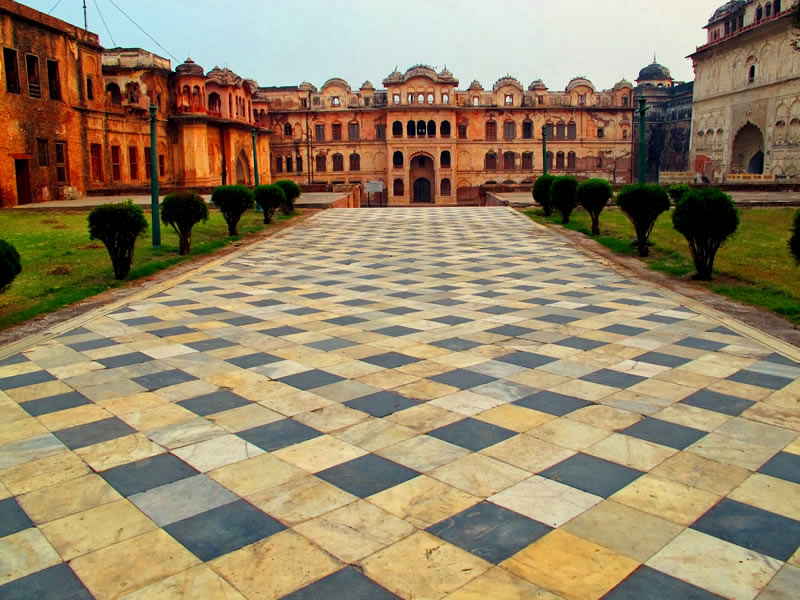Sorry! No information is available
Qila Mubarak is one of the prominent tourist attractions of Patiala. Built in 1764, by Maharaja Ala Singh, the fort was originally made as a mud fort or kachi garhi. The Maharaja constructed the pacca qila after his conquest of Sirhind.
He constructed the qila by using the octroi received from the merchandise passing through his territory of the GT road. Qila Mubarak stands in a 10-acre ground, in the heart of the district, about 29 km to the west of Ambala.
Qila Mubarak has two main parts, which were built by two royals. One of them is Qila Androon i.e. the interior portion, built by Maharaja Ala Singh. Situated on a mound, it ascends as one move into it. It forms the main palace where the royal family resided in the past. The palace has an architectural style with synthesis of the Mughal and Rajasthani rule.
The complex has 10 courtyards along the north-south axis and each courtyard is unique in size and character. Each set of rooms in the Qila Androon makes a cluster around a courtyard and each bears a specific name.
The other part of the palace is Qila Mubarak, which is between Qila Androon and the outer walls, with the secretariat on the left and the Darbar Hall on the right. The Darbar Hall has now been converted into a mini museum, which contains rare arms and armors, including the sword and dagger of Guru Gobind Singh and the sword of Nadir Shah, called 'Shikar Gah’, who invaded India in 1739. This portion was built by Maharaja Karam Singh.
The gate of the Qila Androon is decorated with exquisite geometric and floral designs and is made of lime plaster.
Qila Mubarak has several apartments inside it like, the Jail Walla Palace for royal prisoners, the Moti (pearl) Palace, the Sheesh (mirror work) Palace, the Rajmata (Queen Mother) Palace, the Palace of Colors and the Palace of Moon. There are also recreational chambers called the Putli Ghar (Puppet House) and Bagh Ghar (Garden House).
The striking feature of the palace is that it is fitted with underground sewerage system and has a room connected with a tunnel, which brings cool air from the basement.
The royal kitchen, called the Lassi Khana, is a small two-storied building, with a central courtyard and a well. It adjoins the Ran-bass and a passage links it to the Qila Androon. It is believed to have served nearly 35,000 people every day, in the earlier years.
The qila has a guest house as well, called the Ran Baas. It has an imposing gateway and two courtyards.
A room in the first courtyard, with painted walls and a gilt throne, was probably for semi-formal audience. Facing each other across the courtyard are two exquisite chambers, one painted and the other decorated with mirror work.
Two painted chambers are seen inside Qila Mubarak, illustrating the scenes from Hindu mythology and portraits of Sikh Gurus in Patiala style. One can also find precious collection of tree-like chandeliers, made of Bohemian cut-glass, emitting prism-like radiant splendor.
There is a Cannon Park inside the premises of the Qila, which abounds in traditional weapons and metallurgy. Outside the Qila, there is Darshani Gate, a Shiva temple and bazaar shops. These shops abound in precious ornaments, jootis, parandis, rare specimen of the Kangra and other typical Punjabi handicrafts.
Quila Androon, Chandni Chowk, Adalat Bazar, Patiala, Punjab 147001
Patiala
,,







